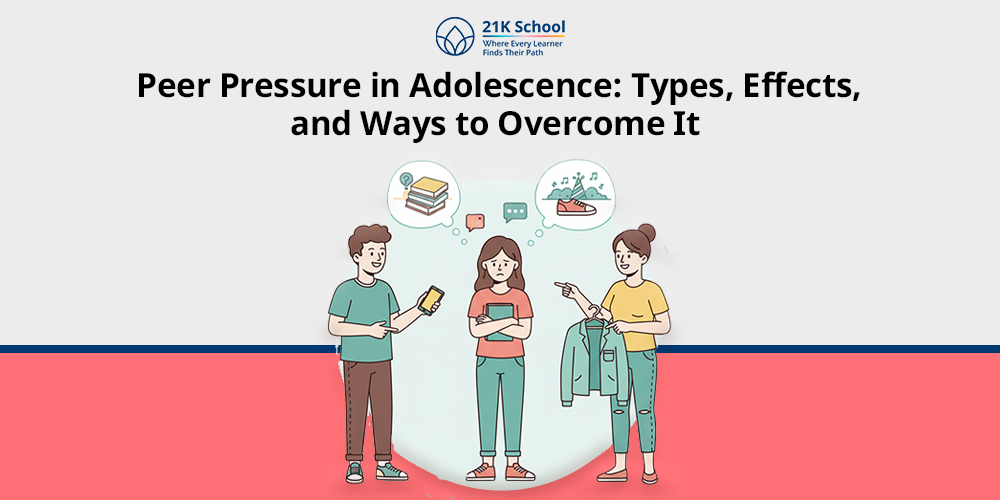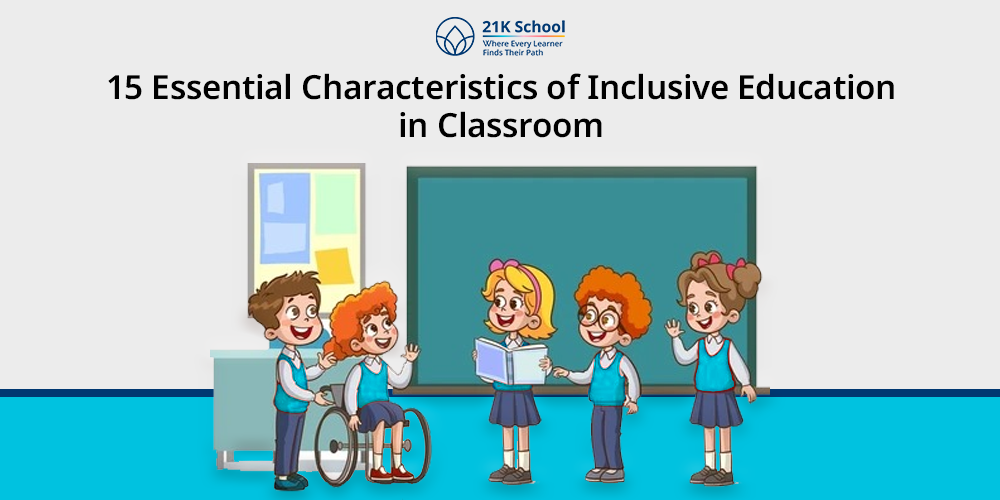
A classroom offers a valuable environment for learning. Inclusive education is all about placing students with diverse abilities in the same classroom.
It creates an environment where every learner feels valued, supported, and empowered to succeed.
The importance of inclusive education is to ensure all students, regardless of their abilities, backgrounds or needs, can access effective learning experiences together.
In the 21st century, inclusive education in India works to improve the growth mindset.
Here we will discuss the key characteristics that define inclusive education and how they create equitable and enriching learning spaces for all.
Contents
- 1 15 Characteristics of Inclusive Education
- 1.1 1. Strengthen and Support All Students
- 1.2 2. Features of Inclusive Schools
- 1.3 3. Flexibility
- 1.4 4. Personalized Learning
- 1.5 5. Positive Learning Environment
- 1.6 6. Professional Development
- 1.7 7. Addressing Diverse Learning Needs
- 1.8 8. Encourages Student Participation
- 1.9 9. Education Equality
- 1.10 10. Connection Between General and Special Education
- 1.11 11. Proactive Student Leadership
- 1.12 12. Active Engagement
- 1.13 13. Continuous Learning
- 1.14 14. Promotes Collaborative Teaching
- 1.15 15. Uses Assistive Technology
- 2 Conclusion
15 Characteristics of Inclusive Education

Inclusive education is crucial for part of the classroom which creates a learning environment. The key characteristics include valuing diversity, adapting to individual needs, fostering a sense of belonging etc.
Here’s a breakdown of the key characteristics:
1. Strengthen and Support All Students
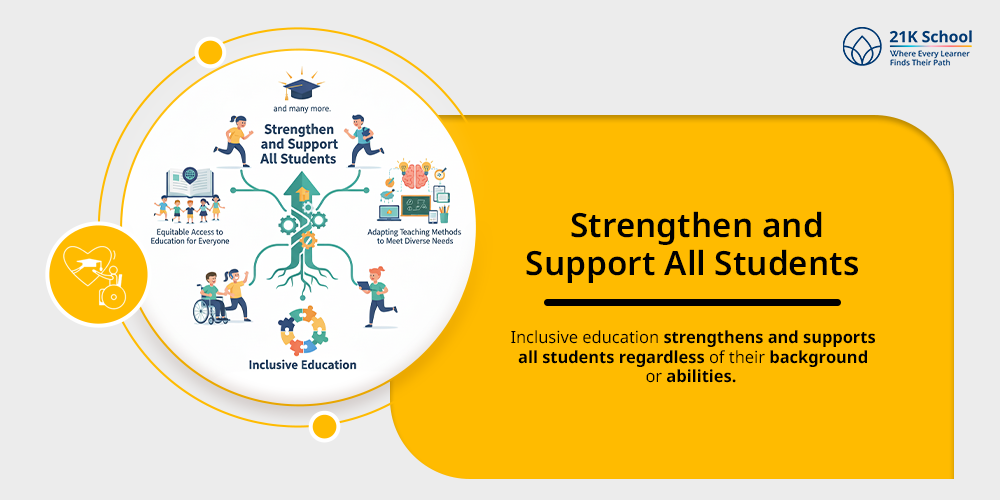
Inclusive education strengthens and supports all students regardless of their background or abilities.
The main focus is on equitable access to education for everyone, adapting teaching methods to meet diverse needs and many more.
2. Features of Inclusive Schools
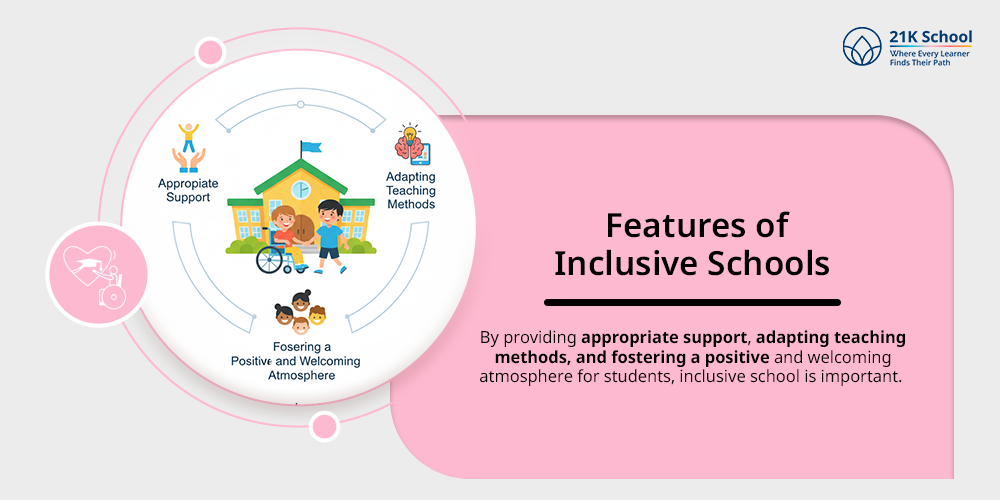
Inclusive classrooms and schools provide an effective environment that makes learning easy for everyone.
By providing appropriate support, adapting teaching methods, and fostering a positive and welcoming atmosphere for students, inclusive school is important.
3. Flexibility
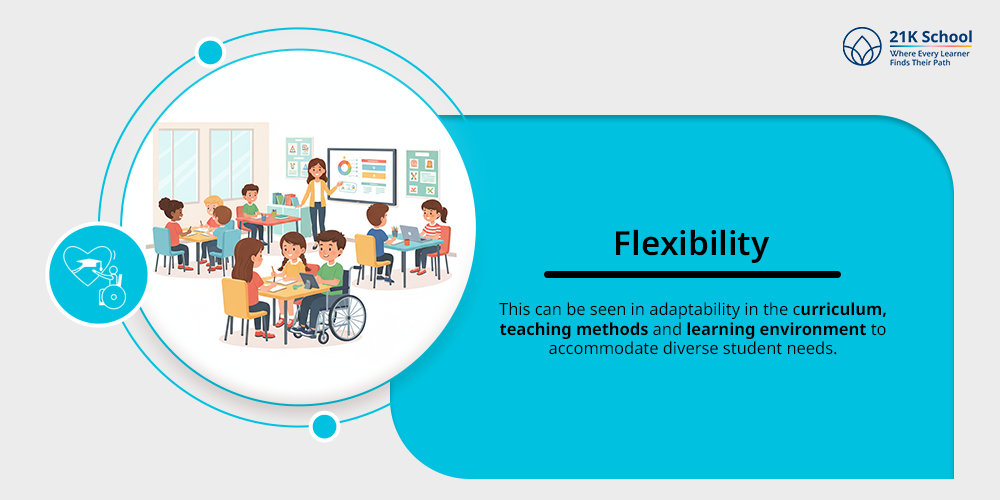
One of the key characteristics of inclusive education is flexibility in learning .
This can be seen in adaptability in the curriculum , teaching methods and learning environment to accommodate diverse student needs.
4. Personalized Learning
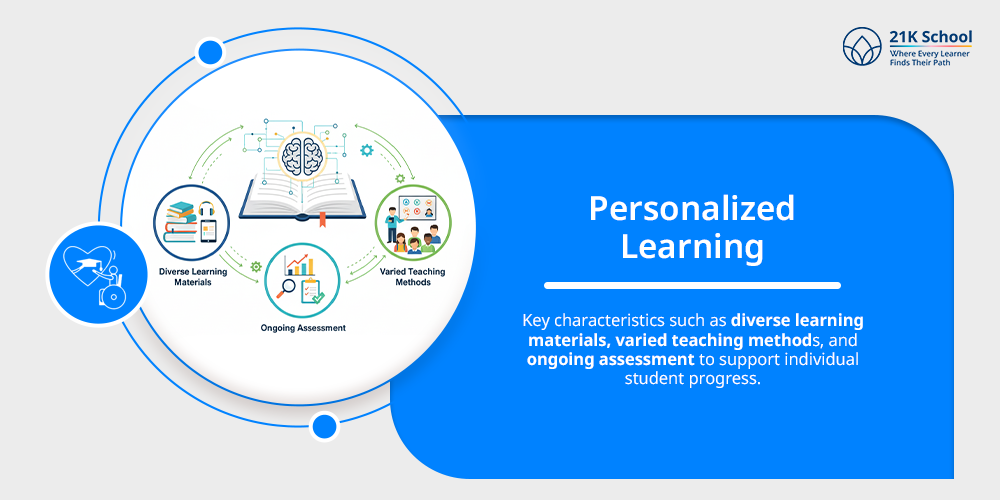
Personalized learning in inclusive education fulfils the unique needs of each student.
Key characteristics such as diverse learning materials, varied teaching methods, and ongoing assessment to support individual student progress.
5. Positive Learning Environment
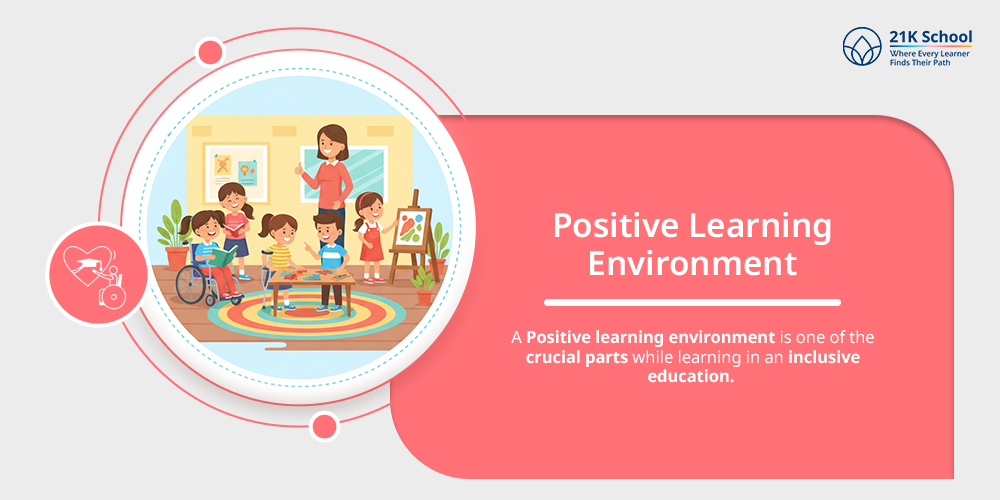
A positive learning environment is one of the crucial parts while learning in an inclusive education.
Diverse learning materials, varied teaching methods, and ongoing assessment to support individual student progress are some unique ways time caters.
6. Professional Development
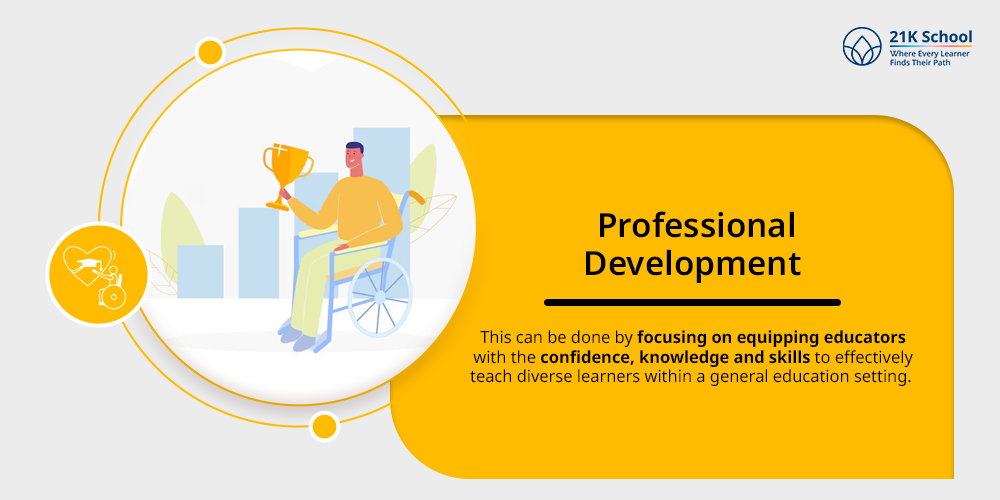
Personal development is not enough for learners in inclusive education, learners also need professional development .
This can be done by focusing on equipping educators with the confidence, knowledge and skills , to effectively teach diverse learners within a general education setting.
7. Addressing Diverse Learning Needs
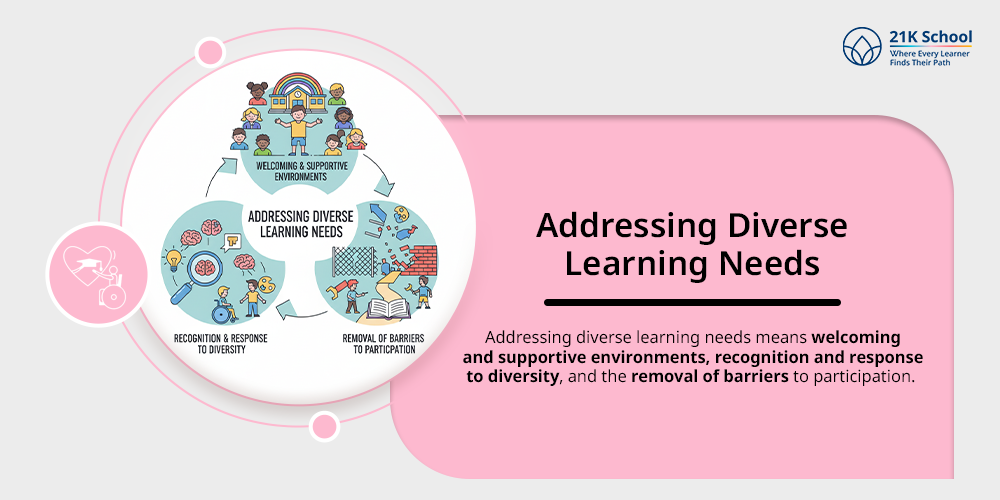
Addressing diverse learning needs means welcoming and supportive environments, recognition and response to diversity, and the removal of barriers to participation.
This helps in the development of learners and promotes social inclusion where learners work with their full potential. Also learn how to promote inclusive education in schools .
8. Encourages Student Participation
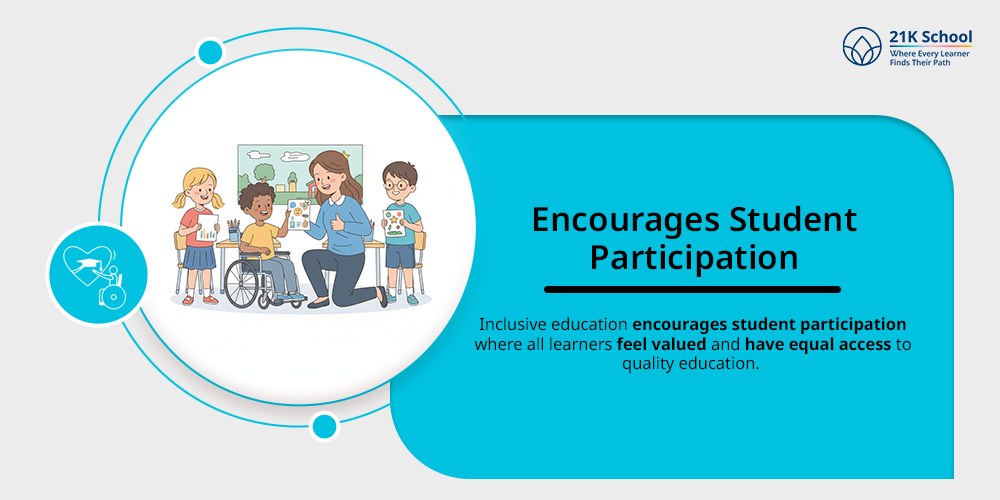
Inclusive education encourages student participation where all learners feel valued and have equal access to quality education .
It promotes active listening and tailoring instruction to meet diverse needs.
9. Education Equality
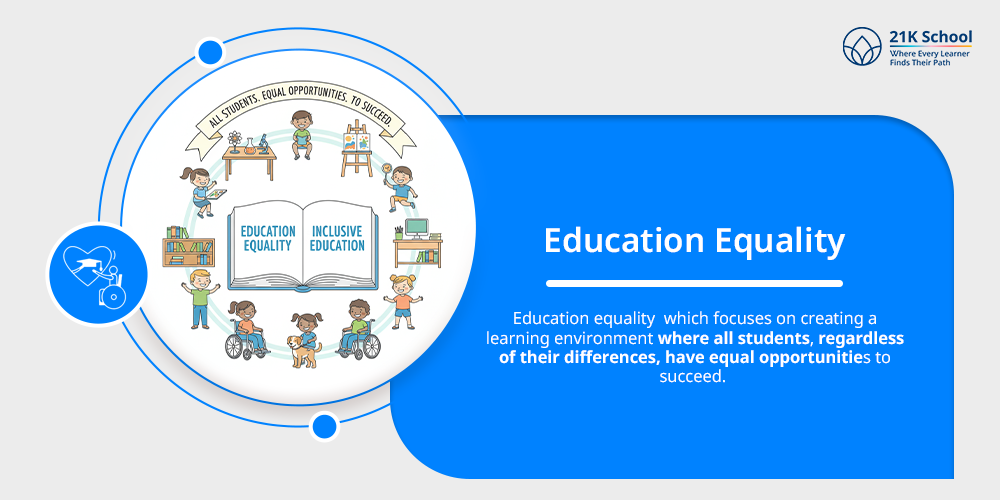
Education equality is the most important characteristic of inclusive education which focuses on creating a learning environment where all students, regardless of their differences, have equal opportunities to succeed.
10. Connection Between General and Special Education
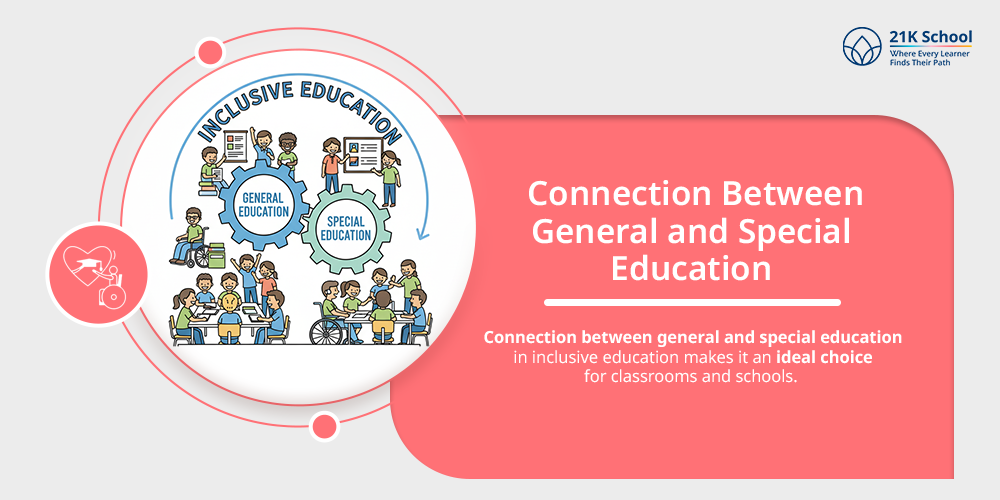
Connection between general and special education in inclusive education makes it an ideal choice for classrooms and schools.
Teaching students with and without disabilities together in class will foster a sense of belonging and equal opportunity.
Also, read the role of inclusive education for children with special needs .
11. Proactive Student Leadership
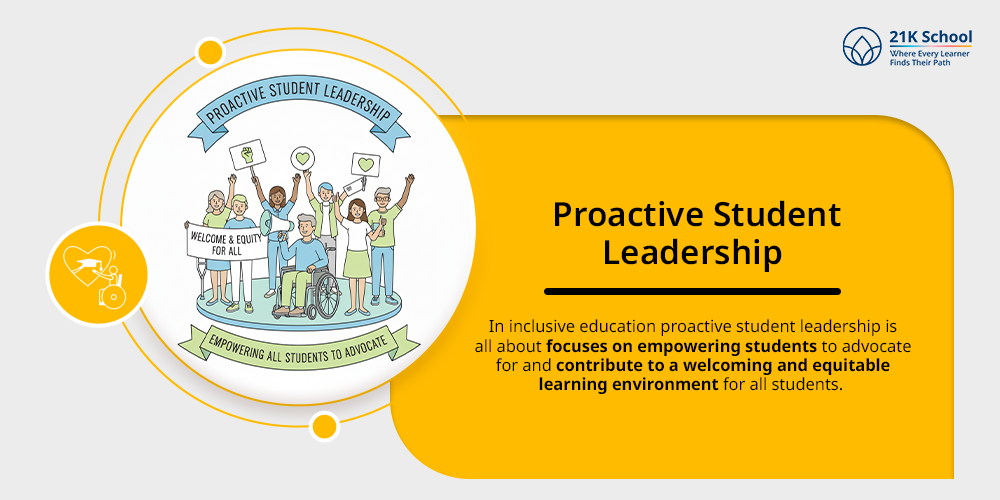
In inclusive education proactive student leadership is all about focuses on empowering students to advocate for and contribute to a welcoming and equitable learning environment for all students.
This improves strong communication skills, decision-making and emotional intelligence of learners.
12. Active Engagement
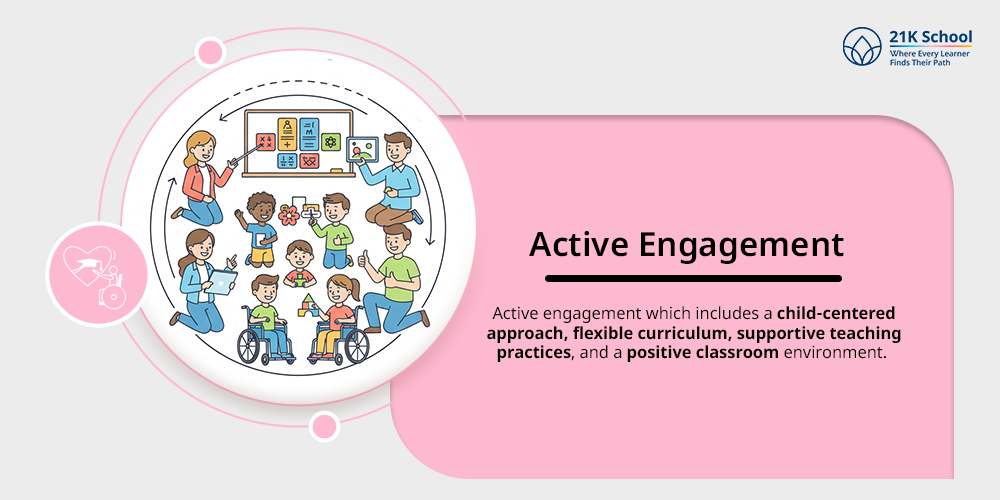
An effective inclusive classroom requires active engagement which includes a child-centered approach, flexible curriculum, supportive teaching practices, and a positive classroom environment.
13. Continuous Learning
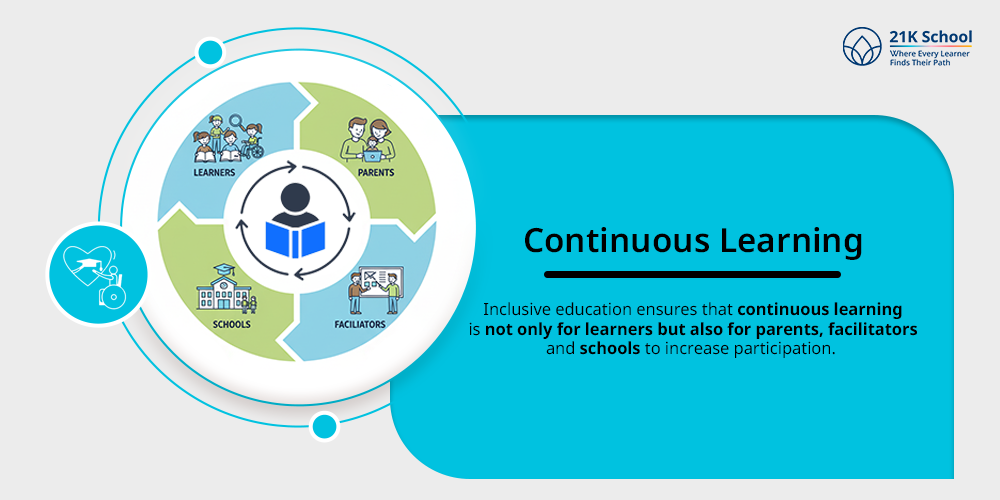
Inclusive education ensures that continuous learning is not only for learners but also for parents, facilitators and schools to increase participation.
With the help of recognizing diversity as an asset, providing individualized support, promoting collaboration, and ensuring physical and social accessibility lifelong learning becomes more impactful.
14. Promotes Collaborative Teaching
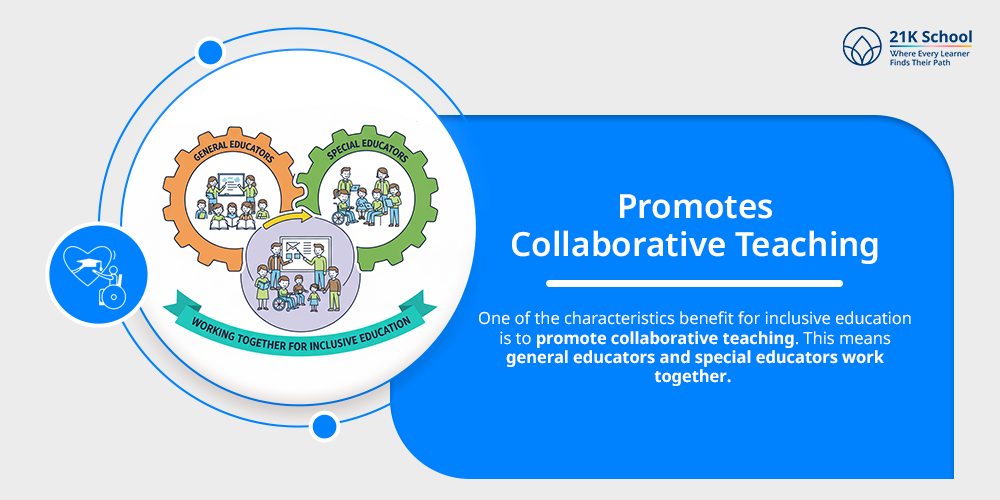
One of the characteristics benefit for inclusive education is to promote collaborative teaching. This means general educators and special educators work together.
Here learners can share shared expertise, better student-teacher ratios, individualized attention and a supportive environment.
Understand the role of teacher in inclusive education and various teaching strategies for inclusive education .
15. Uses Assistive Technology
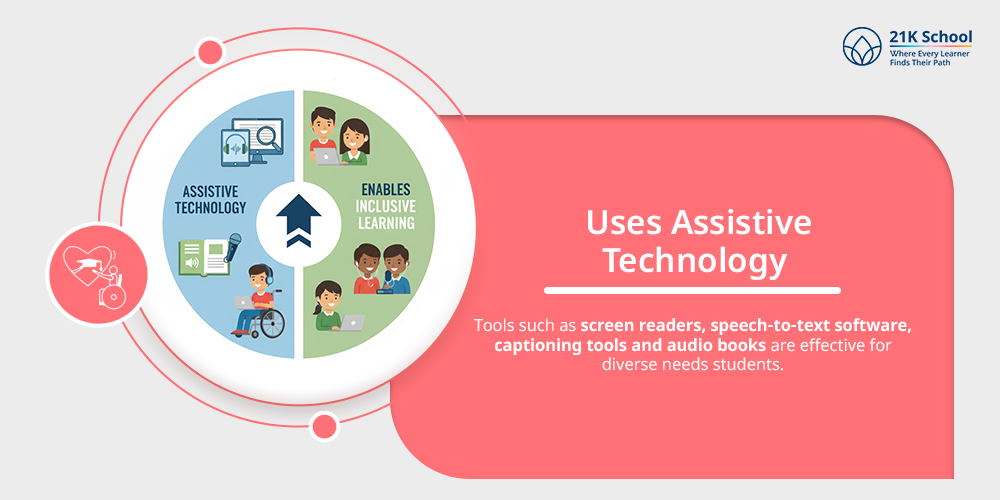
Inclusive education, facilitated by assistive technology or AT. Assistive technology means a wide range of tools and strategies enables inclusive learning.
Tools such as screen readers, speech-to-text software, captioning tools and audio books are effective for diverse needs students.
Conclusion
Inclusive education is a most effective and ideal method for learners. It is a commitment to fairness, dignity, and learning for all.
The future of inclusive education is to provide flexibility, equity, personalized support and community collaboration. Inclusive classrooms improve every learners to learn, participate, and succeed.
As facilitators and parents, fostering inclusivity is an ideal thing to do. It is essential for building a more compassionate and capable society.
Including inclusive education in the classroom makes children open to work and improves communication skills with others.
These or several challenges of inclusive education but understanding and implementing the characteristics helps facilitators focus on the development of students.
For effective implementation go through the solutions for issues in inclusive education . If you want to know more about inclusive education and how to implement it check out our other blogs.



